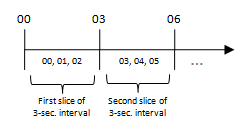

These systems place a heavy burden on the performance of the message-passing mechanism, especially when based on microkernel-like inter-process communication. Thus, trusted servers can coexist next to untrusted applications. Microkernel-based designs in addition allow for these applications to be mutually protected. Open real-time systems provide for co-hosting hard-, soft- and non-real-time applications. Finally, MC-IPC is shown to offer analytical benefits in the context of Vestal's mixed-criticality task model. It is shown to be practically viable with a prototype implementation in LITMUSRT and validated with a case study involving several antagonistic failure modes. The MC-IPC protocol enables strict temporal and logical isolation among mutually untrusted tasks and thus can be used to share resources among tasks of different criticalities. Instead, a solution based on resource servers (in the microkernel sense) is proposed, and MC-IPC, a novel synchronous multiprocessor IPC protocol for invoking such servers, is presented. Taking a pragmatic, systems-oriented point of view, this paper argues that traditional real-time locking approaches are unsuitable in a mixed-criticality context: locking is a cooperative activity and requires trust, which is inherently in conflict with the paramount isolation requirements. Such strict isolation, however, is difficult to ensure even for independent tasks, and has not yet been attained if low- and high-criticality tasks share resources subject to mutual exclusion constraints (e.g., Shared data structures, peripheral I/O devices, or OS services), as it is often the case in practical systems. In mixed-criticality systems, highly critical tasks must be temporally and logically isolated from faults in lower-criticality tasks. We show that the conjunction of both concepts allows the calculation of reasonably tight latency bounds for scenarios not adequately covered by related work. Secondly, we apply the busy-window approach and formulate a modular response-time analysis on task-chain level suitable but not restricted to static-priority scheduled systems. these (functional) precedence and mutual blocking relations. We therefore firstly present a novel task (meta-)model that is more expressive and accurate w.r.t. When modelling these systems by classical task graphs, some of these effects are obfuscated and tend to render such an analysis either overly pessimistic or even optimistic.
#EXAMPLWS OF TIMESLICE SOFTWARE#
Composing such a system of several interacting software components will, however, lead to complex precedence and blocking relations, which must be taken into account when performing latency analysis. You can use sched_rr_get_interval() to get the SCHED_RR interval for a specific SCHED_RR process.For the development of complex software systems, we often resort to component-based approaches that separate the different concerns, enhance verifiability and reusability, and for which microkernel-based implementations are a good fit to enforce these concepts. * Timeslices get refilled after they expire. * default timeslice is 100 msecs (used only for SCHED_RR tasks). That means the timeslice for each process is proportional to the current load and weighted by the process' priority value.įor special-purpose realtime processes which use SCHED_RR, the default timeslice is defined in the Linux kernel as RR_TIMESLICE in include/linux/sched/rt.h. This is because the Completely Fair Scheduler, the default Linux scheduler, assigns a proportion of the processor to a process rather than a fixed timeslice. Uninterrupted CPU time" that you may expect it to be.

"slice" of CPU time, but preemption will be triggered only if a moreĭeserving task is available, so a "slice" is not the "max
#EXAMPLWS OF TIMESLICE FULL#
A task may have received a full (variable) Also note that CFS preemption decisions are based upon Sched_min_granularity_ns, but note that "slice" is not a fixed You can tune "slice" by adjusting sched_latency_ns and The quantum allocated for a particular process may vary:


 0 kommentar(er)
0 kommentar(er)
